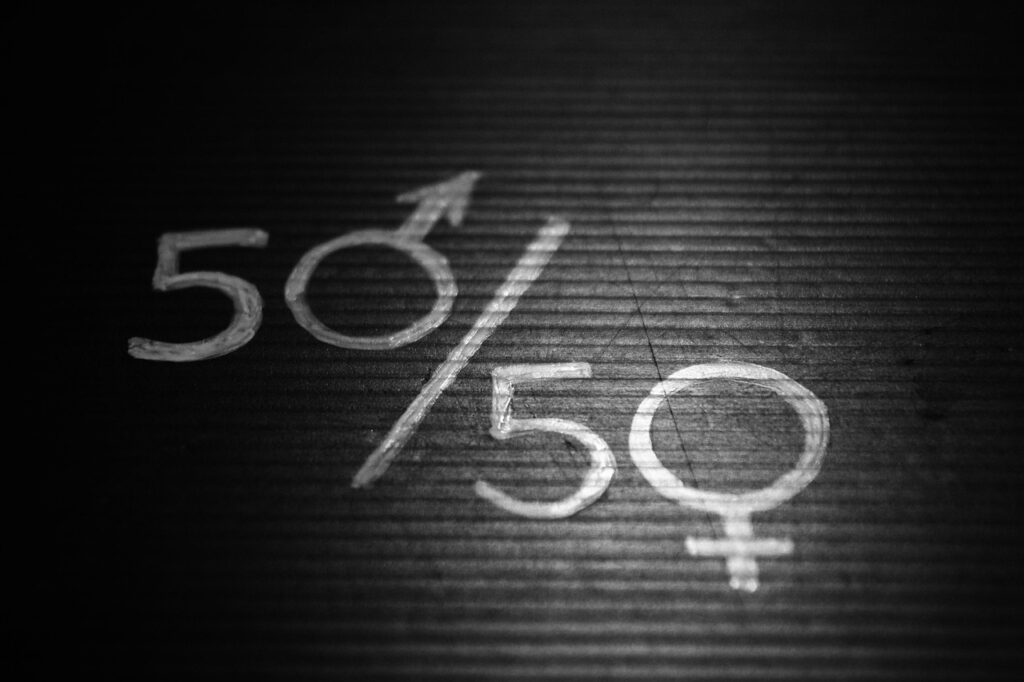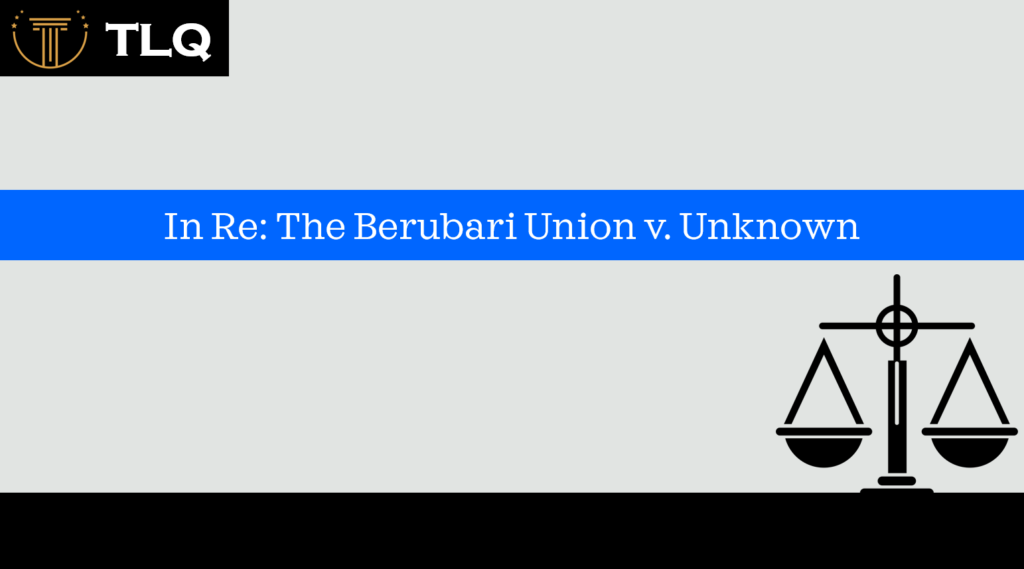Published on: 12th October 2024
Authored by: Dibakar Dam
School of Law, Brainware University
Abstract:
The intersection of terrorism and capital punishment presents a complex and controversial issue in the Indian legal landscape. This article explores judicial trends in sentencing for terror-related offenses in India, focusing on the application of the death penalty. The discussion is structured around the evolution of Indian jurisprudence on capital punishment, the specific challenges posed by terrorism cases, and the principles that guide sentencing in such cases. By analyzing landmark cases, legislative frameworks, and the principles of proportionality, rarest of the rare doctrine, and judicial discretion, this article provides a comprehensive overview of how Indian courts navigate the delicate balance between the need for justice, deterrence, and the protection of human rights. The article concludes by reflecting on the broader implications of these trends for the Indian criminal justice system and the ongoing debate surrounding the use of the death penalty in cases involving terrorism.
Keywords: Death Penalty, Capital Punishment, Terror Punishment, Terror Offences and Death Sentence.
Introduction:
Terrorism remains a critical threat to India’s national security, with the country having endured several high-profile attacks, such as the 2001 Parliament attack[1] and the 2008 Mumbai attacks[2]. These incidents have intensified the debate over the use of the death penalty as a deterrent against terrorism. India’s legal framework, including the Indian Penal Code (IPC) and the Unlawful Activities (Prevention) Act (UAPA), provides for capital punishment in cases of extreme violence[3], especially those threatening national integrity.
The Indian judiciary, guided by the “rarest of the rare” doctrine established in Bachan Singh v. State of Punjab (1980), plays a crucial role in determining when the death penalty is appropriate for terror-related offenses. This principle ensures that capital punishment is reserved for cases of extraordinary severity, where no other penalty would suffice.
This article examines judicial trends in sentencing for terror-related offenses in India, with a specific focus on the application of the death penalty. It explores how Indian courts have interpreted and applied the law in cases of terrorism, the principles guiding these decisions, and the implications of these trends for the broader debate on capital punishment in India.
The Legal Framework for Capital Punishment in India
India, as one of the 58 countries that retain the death penalty, has a well-established legal framework for capital punishment. Both its substantive and procedural laws provide for the death penalty, reflecting a legislative continuity from the pre- to post-independence periods.
Constitutional Provisions and Judicial Interpretation
The Indian Constitution does not explicitly prohibit the death penalty, but it imposes significant restrictions on its application. Article 21 of the Constitution guarantees the right to life and personal liberty, which can only be deprived by a procedure established by law. The Supreme Court of India has interpreted this provision to mean that the death penalty can only be imposed in the “rarest of the rare” cases, a doctrine that has become central to the judicial approach to capital punishment.[4]
Legislative Provisions:
Several statutes in India provide for the death penalty, particularly in cases involving terrorism. Key among these are the Indian Penal Code (IPC), the Unlawful Activities (Prevention) Act (UAPA), and the Prevention of Terrorism Act (POTA), which was repealed in 2004. These laws empower courts to impose the death penalty for a range of offenses, including waging war against the state, acts of terrorism resulting in death, and conspiracy to commit such acts[5]. Additionally, The Anti-Hijacking Act of 2016 also includes provisions for capital punishment.
Judicial Trends in Sentencing for Terror-Related Offenses
The “Rarest of the Rare” Doctrine:
The “rarest of the rare” doctrine, first articulated by the Supreme Court in Bachan Singh v. State of Punjab (1980)[6], has been the cornerstone of judicial reasoning in death penalty cases in India. This doctrine requires courts to balance the aggravating and mitigating circumstances of each case before deciding whether the death penalty is warranted. In terrorism-related cases, the nature of the offense, the impact on society, and the intent behind the act are critical factors that influence the court’s decision. Guidelines for Sentencing:
-
- Courts must consider aggravating and mitigating circumstances while determining the appropriateness of the death penalty.
- The focus should be on individualized sentencing, considering the nature of the offense and the character of the offender.
- The Court has emphasized the importance of a fair trial and restricted arbitrary use of this extreme punishment.
Key Judicial Decisions:
Mohd. Afzal Guru v. State of NCT of Delhi (2013):
Mohd. Afzal Guru’s case remains one of the most high-profile instances involving the death penalty for terrorism-related offenses. Guru was convicted for his role in the 2001 attack on the Indian Parliament—an assault that resulted in the deaths of security personnel and parliamentary staff. The Supreme Court upheld Guru’s death sentence, emphasizing the gravity of the offense and its impact on the nation. Additionally, the court considered the need to deter similar acts in the future, making the death penalty a crucial tool in sending a strong message against terrorism[7].
Yakub Abdul Razak Memon v. State of Maharashtra (2015):
Yakub Memon’s involvement in the 1993 Mumbai bomb blasts marked a dark chapter in India’s history. The coordinated attacks caused widespread devastation, resulting in over 250 deaths and numerous injuries. The Supreme Court upheld Memon’s death sentence, citing the scale of the attack, the meticulous planning involved, and the extensive loss of life and property. By affirming the death penalty, the court aimed to convey society’s abhorrence for such acts and underscore the importance of protecting national security[8].
Ajmal Kasab v. State of Maharashtra (2012):
Ajmal Kasab, a Pakistani national, was the sole surviving terrorist from the 2008 Mumbai attacks—a series of coordinated strikes targeting multiple locations, including the iconic Taj Mahal Palace Hotel and the Chhatrapati Shivaji Terminus. The Supreme Court upheld Kasab’s death sentence, recognizing the brutality of the attacks, the threat posed to national security, and the need for justice. Kasab’s case fell squarely within the “rarest of the rare” category, justifying the imposition of the death penalty[9].
Principles Guiding Judicial Decisions:
- Proportionality
The principle of proportionality underscores that the severity of punishment should align with the gravity of the offense committed. In terrorism cases, courts carefully consider the scale of the attack, the intent behind it (including attempts to destabilize the state), and the broader impact on society. When faced with exceptionally heinous acts, such as large-scale bombings or attacks on critical institutions, the death penalty may be deemed appropriate[10].
- Deterrence
Deterrence plays a significant role in justifying the death penalty for terror-related offenses. Courts recognize that imposing the severest punishment sends a clear message: acts of terrorism will not be tolerated. Particularly in cases involving mass casualties or attacks on symbols of national sovereignty, the death penalty serves as a deterrent against future acts of violence.
- Judicial Discretion
While legislative provisions prescribe the death penalty for specific offenses, its actual imposition lies within the discretion of the judiciary. Judges carefully weigh individual circumstances, including factors such as the offender’s background, intent, and potential for reform. This discretion ensures that justice remains nuanced and considers the unique context of each case[11].
- Public Sentiment and National Security
Judicial decisions in terrorism cases are influenced by public sentiment and concerns about national security. Courts recognize their role in upholding public confidence in the justice system. Simultaneously, they aim to reinforce the state’s capacity to protect its citizens from terrorist threats. Balancing these interests is a delicate task, requiring thoughtful consideration of both legal principles and societal impact.
Challenges in Sentencing for Terror Related Offences[12]:
- Balancing Justice and Human Rights
Sentencing individuals convicted of terrorism-related offenses presents a profound challenge: how to strike a balance between justice and the protection of fundamental human rights. The death penalty, as the ultimate punishment, raises critical questions about the state’s authority to take a life. Moreover, concerns about wrongful convictions and the possibility of rehabilitation loom large. In the context of terrorism, where cases are often complex and evidence gathering is arduous, this balancing act becomes even more intricate[13].
- The Role of Mercy Petitions and Executive Clemency
In India, the power to grant clemency lies with the President and Governors. This executive authority serves as an additional layer of scrutiny, allowing for the potential commutation of death sentences. When cases involve terrorism, the exercise of this power becomes contentious. Advocates for clemency argue for compassion, considering flaws in the judicial process or compelling humanitarian grounds. However, this must be weighed against the imperative to uphold the rule of law and deter future acts of terrorism[14].
- International Perspectives and Obligations
India’s use of the death penalty in terrorism cases cannot be viewed in isolation. It must be considered within the broader context of international human rights obligations. India is a signatory to various treaties, including the International Covenant on Civil and Political Rights (ICCPR)[15], which advocates for the abolition of the death penalty. While India has not abolished capital punishment, it has committed to ensuring that its application aligns with international standards. This includes safeguarding fair trials, providing avenues for appeals, and considering clemency petitions.
The Broader Debate on Capital Punishment:
Arguments for the Death Penalty in Terrorism Cases
Proponents of the death penalty put forth several arguments. First, they argue that it serves as a necessary deterrent against terrorism—a crime that poses an existential threat to the state and society. By imposing the harshest punishment, the legal system aims to prevent future acts of terror. Second, proponents believe that the death penalty provides justice for victims and their families. In cases of mass casualties or attacks on symbols of national sovereignty, the severity of the offense demands an equally severe response. Finally, when perpetrators show no remorse and rehabilitation seems impossible, the death penalty is viewed as a just response. Its irreversible nature ensures that society is protected from dangerous individuals[16].
Arguments Against the Death Penalty
Opponents of the death penalty in terrorism cases raise the following concerns. First, they consider it inherently inhumane and incompatible with principles of human rights. Taking a life as punishment raises ethical questions and challenges our commitment to human dignity. Second, critics argue that the death penalty is not an effective deterrent. Empirical evidence remains inconclusive, and the threat of execution may not dissuade potential terrorists who are often willing to die for their cause. Third, the risk of wrongful convictions is a grave concern. In complex terrorism cases, gathering evidence can be challenging, and innocent individuals may face execution. Once a life is taken, there is no way to rectify mistakes. Finally, some view the death penalty as retribution rather than true justice. While it satisfies a desire for revenge, it may not contribute significantly to societal well-being or rehabilitation[17].
Conclusion:
The judicial trends in sentencing for terror-related offenses in India reflect a careful balancing act between the need for justice, deterrence, and the protection of human rights. The application of the death penalty in such cases is guided by the “rarest of the rare” doctrine, with courts considering the gravity of the offense, the intent behind it, and its impact on society. While the death penalty remains a contentious issue, particularly in the context of terrorism, the Indian judiciary has sought to ensure that its application is consistent with constitutional principles and international human rights obligations.
As India continues to face the threat of terrorism, the debate over the death penalty is likely to persist. It remains to be seen whether the judiciary will continue to uphold the death penalty in terrorism cases or whether evolving legal and societal norms will lead to a re-evaluation of its use. In the meantime, the careful scrutiny of each case and the application of established legal principles will remain crucial in ensuring that justice is served while upholding the fundamental rights enshrined in the Constitution.
References:
[1] Indian express, https://indianexpress.com/article/explained/2001-parliament-attack-9066363/ (last visited Aug. 30,2024).
[2] INDIATODAY, https://www.indiatoday.in/india/story/how-2611-mumbai-terror-attack-happened-in-2008-from-first-eyewitness-to-kasab-1094473-2017-11-26 last visited Aug. 30,2024).
[3] The Unlawful Activities (Prevention) Act, No. 37 of 1967, INDIA CODE (2024).
[4] INDIA CONST. art. 21.
[5] The Indian Penal Code, 1860, 121, No. 45, Act of Parliament, 1860(India).
[6] Bachan Singh v. State of Punjab, AIR 1980 SC 898, 1980
[7] State v. Mohd. Afzal And Ors., 2003VIIAD(DELHI)1, 107(2003)DLT385, 2003(71)DRJ178, 2003(3)JCC1669
[8] Yakub Abdul Razak Memon v. The State of Maharashtra, CDJ 2013 SC 230.
[9] Mohammad Ajmal Amir Kasab v. State of Maharashtra, (2012) 9 SCC 1.
[10] K. Nagaraj, Judicial Approach to Terrorism in India: Balancing National Security and Human Rights, 10 Nat’l L. Sch. Ind. Rev. 98, 102 (2022).
[11] Law Commission of India, Report No. 221: Need for Speedy Justice in Terrorism Cases, 2008, http://lawcommissionofindia.nic.in/reports/report221.pdf, (last visited Aug. 30,2024).
[12] K.P. Raghuvanshi, Sentencing in Terror-Related Offences: Challenges and Judicial Responses in India, 12 Ind. J. Crim. L. & Just. 325, 328 (2023).
[13] Dinkar Gitte Anant Pawar, Execution of Capital Punishment in India: Is it a Violation of Human Rights?, 12 International Journal of Science and Research (IJSR) 608–611 (2023), https://www.ijsr.net/archive/v12i6/SR23529144257 .pdf (last visited Aug 30, 2024)
[14] Shivangi Gangwar & Aishwarya Pagedar, Examining the living metaphor in the Indian Constitution, 13 Jindal Global Law Review 347–377 (2022), https://link.springer.com/10.1007/s41020-022-00183-8 (last visited Aug 30, 2024)
[15] Areeba Butt, International Covenant on Civil and Political Rights (ICCPR), SSRN Electronic Journal (2024), https://www.ssrn.com/abstract=4856071 (last visited Aug 30, 2024)
[16] Vandana Tiwari, Death Penalty In India: A Critical Analysis, 38 LAW REVIEW (2018), https://myresearchjournals.com/index.php/JNPGLR/article/view/14963 (last visited Aug 30, 2024).
[17] Sangeeta Thakur -, Capital Punishment In India: A Complex Issue, 5 International Journal For Multidisciplinary Research 5525 (2023), https://www.ijfmr.com/research-paper.php?id=5525 (last visited Aug 30, 2024).




